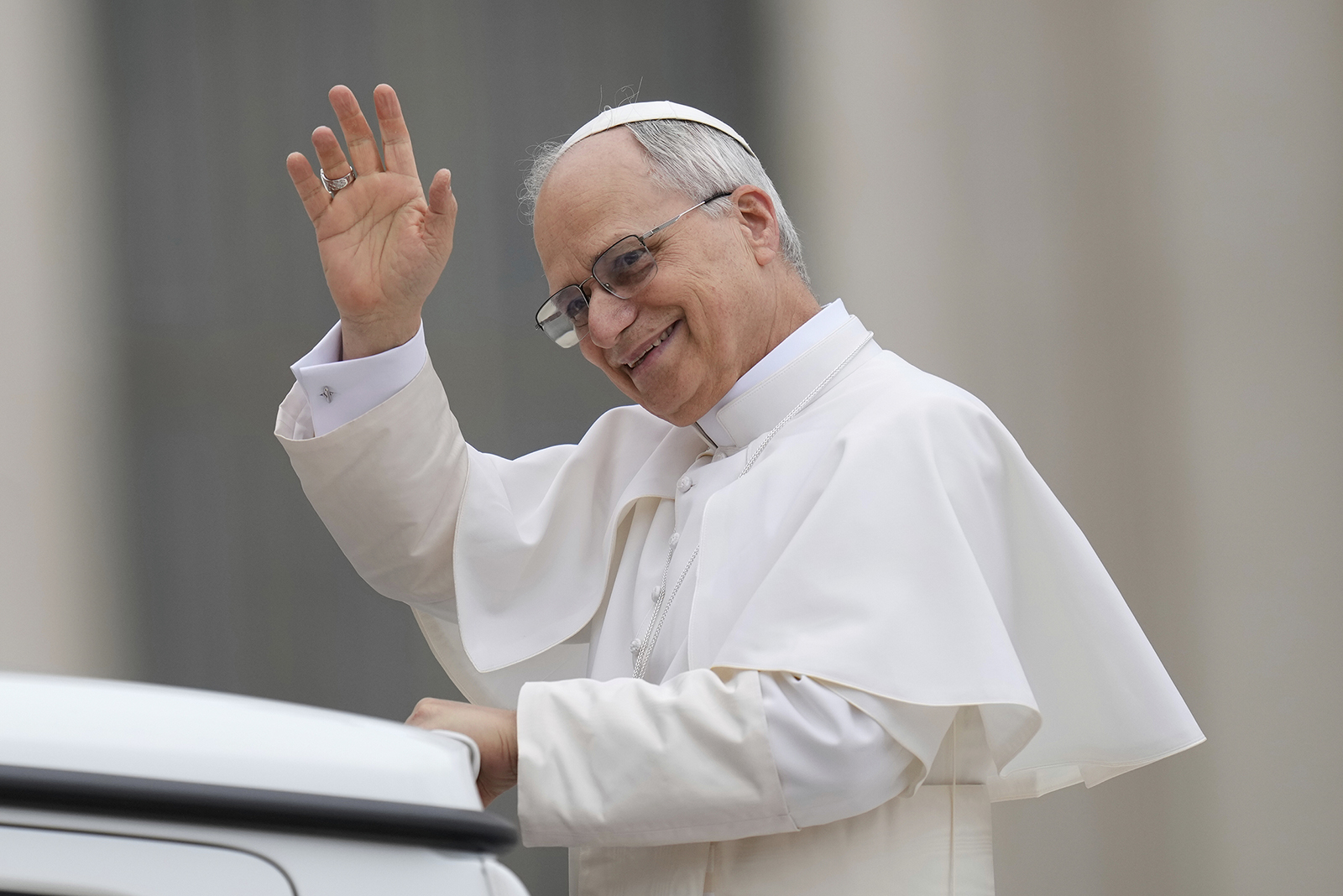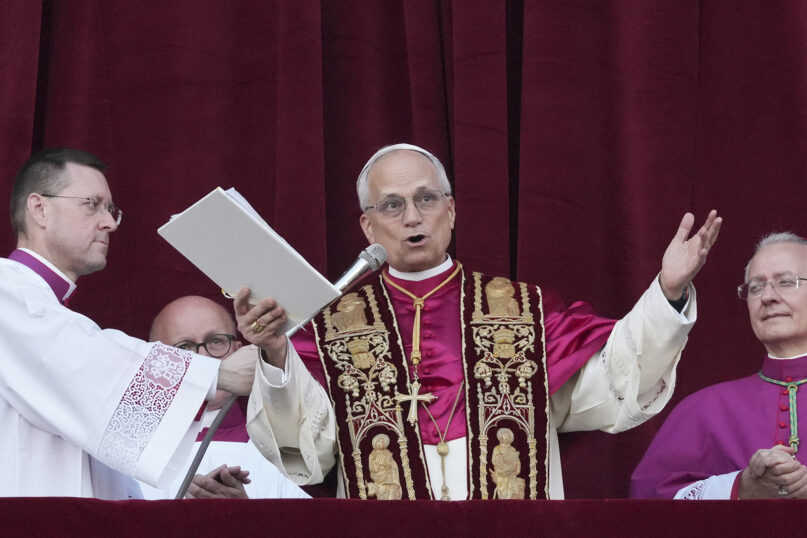
(RNS) — It is early in Pope Leo XIV’s papacy, and so far, his words and actions are proving to be a Rorschach test, with their interpretations saying more about the commentators than about the pope himself.
Conservatives are pleased that in his first appearance on the St. Peter’s Basilica balcony he was wearing Pope Benedict XVI’s stole and red mozzetta. Leo has even said nice things to the members of the Vatican curia, whom Pope Francis often chided. The new pope’s words in support of church unity are pleasing to their ears.
Liberals are happy he chose the name Leo, harking back to Leo XIII, the 19th-century founder of Catholic social teaching. He has also invoked his predecessor Francis in a positive way.
So, who is Leo and where will he lead the church? Will he reverse the reforms of Francis? Push the pause button? Or will Leo advance beyond where Francis was willing to go? It’s still worth analyzing the new pope’s first few speeches for clues.
In his first speech from the balcony of St. Peter’s Basilica on May 8, Leo said the cardinals chose him “to be the successor of Peter and to walk together with you as a church, united, ever pursuing peace and justice, ever seeking to act as men and women faithful to Jesus Christ, in order to proclaim the Gospel without fear, to be missionaries.”
This means Leo believes a united church faithful to Jesus Christ is essential to the mission of the church in proclaiming the Gospel and seeking peace and justice.

Newly elected Pope Leo XIV addresses the faithful from the balcony of St. Peter’s Basilica at the Vatican, May 8, 2025. (AP Photo/Alessandra Tarantino)
He said he sees the Church of Rome as “a missionary church, a church that builds bridges and encourages dialogue, a church ever open to welcoming, like this square with its open arms, all those who are in need of our charity, our presence, our readiness to dialogue and our love.”
He also wants “a synodal church, a church that moves forward, a church that always seeks peace, that always seeks charity, that always seeks to be close above all to those who are suffering,” he said.
All these themes — peace, justice, charity, dialogue, building bridges, welcoming and synodality — are in tune with the policies of Francis, whose “courageous voice” Leo invoked as he blessed Rome and the whole world with God’s love. Leo may have worn Benedict’s clothes, but his words rhymed with those of Francis.
In his first address to the College of Cardinals on May 10, Pope Leo practiced what he preached by first giving a short talk and then having a dialogue where cardinals could give him “advice, suggestions, proposals, concrete things.” Here, however, he exercised synodality in a forum without laity that would be acceptable to conservatives. He referred to the cardinals as his “closest collaborators,” something that was not true under Francis, who almost never consulted with the college as a group.
Francis preferred holding synods to extraordinary consistories where all the cardinals are called to Rome to advise the pope. Will Leo bring back consistories as a form of consultation or will he only rely on synods as Francis did?
During his short address, Leo described the pope as “a humble servant of God and of his brothers and sisters, and nothing more than this.” This is also in keeping with Francis’ view that bishops and priests are servants of the people of God, not masters.
Altogether, Leo invoked Francis five times, praising him for his “complete dedication to service and to sober simplicity of life, his abandonment to God throughout his ministry and his serene trust at the moment of his return to the Father’s house.”
“Let us take up this precious legacy,” he told the cardinals, “and continue on the journey, inspired by the same hope that is born of faith.”
Leo pointed to Francis’ apostolic exhortation “Evangelii Gaudium,” from which he highlighted “several fundamental points: the return to the primacy of Christ in proclamation (cf. No. 11); the missionary conversion of the entire Christian community (cf. No. 9); growth in collegiality and synodality (cf. No. 33); attention to the sensus fidei (cf. Nos. 119-120), especially in its most authentic and inclusive forms, such as popular piety (cf. No. 123); loving care for the least and the rejected (cf. No. 53); courageous and trusting dialogue with the contemporary world in its various components and realities (cf. No. 84; Second Vatican Council, Pastoral Constitution Gaudium et Spes, 1-2).”
This was a full-throated embrace of Francis’ legacy.
Leo argued these are “evangelical principles that have always inspired and guided the life and activity of God’s family.” Citing both Francis and Benedict, he asserted, “In these values, the merciful face of the Father has been revealed and continues to be revealed in his incarnate Son, the ultimate hope of all who sincerely seek truth, justice, peace and fraternity” (cf. Benedict XVI, Spe Salvi, 2; Francis, Spes Non Confundit, 3).”
In a third address on Saturday (May 24), the pope spoke to employees of the Holy See and the Vatican City State. He thanked them for their service and noted that “popes pass, the curia remains.”

Pope Leo XIV, in white, is flanked by Monsignor Leonardo Sapienza, in purple sash, after his meeting with the College of Cardinals in the New Synod Hall at the Vatican, May 10, 2025. (Vatican Media)
Leo, as a former member of the curia, has a more positive view of it than Francis did. “The curia is the institution that preserves and transmits the historical memory” of the papacy, he said. This memory “is not only directed to the past, but nourishes the present and guides the future. Without memory, the path is lost, it loses its sense of direction.”
But following Francis, Leo insisted on the missionary dimension of the curia. He repeated what he said on his first day as pope, “Together, we must look for ways to be a missionary church, a church that builds bridges and encourages dialogue, a church ever open to welcoming … with open arms, all those who are in need of our charity, our presence, our readiness to dialogue and our love.”
Although he is gentler than Francis, he still points to areas needing improvement.
“We must all cooperate in the great cause of unity and love,” he said. “Let us seek to do so first of all with our behaviour in everyday situations, starting also from the work environment. Each person can be a builder of unity with his attitudes towards colleagues, overcoming inevitable misunderstandings with patience, with humility, putting himself in the shoes of others, avoiding prejudices, and also with a good dose of humor, as Pope Francis taught us.”
So far, Leo is following the path of Francis, but he has avoided speaking in ways that would cause controversy on either the right or the left. He has avoided pronouncing on controversial topics, like LGBTQ Catholics, the traditional Latin Mass and women deacons, that would be red flags for various parts of the church. But how long he can keep this up remains to be seen.
Perhaps the positive response to Leo from various factions in the church reflects his desire to be a bridge builder, a source of unity. So far, he is succeeding. Almost everyone seems to be embracing him.
Following St. Augustine, it appears Leo does not see unity as everyone singing the same note but rather as a choir singing in harmony. But eventually, the choir director will have to give some directions. Some will be encouraged to sing louder, others softer. Some will be told they are off-key, while others will be chosen as soloists. This will upset some in the choir no matter how gentle the choral master tries to be.
